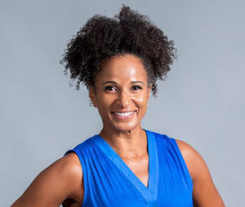LISD Dress Code - Adding Hair Protection (The Crown Act)

Thank you for the great work you’ve done on drafting the updated Dress Code. You specifically address shirts, pants and their equivalents, undergarments, shoes, hats, religious attire including headwear, hoodies, fitted pants, ripped jeans, tank tops and athletic attire.
You know what’s NOT mentioned here? HAIR.
Why is mentioning HAIR important?
Did you know, currently, it is LEGAL to DISCRIMINATE against a person in the workplace or in schools because of their NATURAL or protective HAIRSTYLE in all but 7 states. Hair discrimination is a source of racial injustice and dismisses cultural and ethnic pride.
The history of our nation is riddled with laws and societal norms that
equated “blackness,” and the associated physical traits, for example, dark
skin, kinky and curly hair to a badge of inferiority, often subject to separate
and unequal treatment.
I can give you many examples including De’Andre Arnold, a student in a Houston-Area School District who wasn’t going to be allowed to walk across the graduation stage unless he cut his dreadlocks. It took a lawsuit and a Federal Judge in the US District Court of Houston to allow it.
Or how about Andrew Johnson, the 16-year old black wrestler who was forced to have his hair hacked off by a trainer with scissors if he didn’t want to let his teammates down by not being able to compete.
Why is mentioning hair important?
Because Black women are 1.5 times more likely to be sent home from their workplace or school because of their hair.
Because Symone Woolridge, a Black News Anchor in Memphis, Tennessee was
ridiculed and called unprofessional and childish for wearing her hair in
braids.
Because the last time I came and spoke at this board meeting, I wore my hair like THIS because I needed you all to HEAR MY WORDS without discounting them because of my hair.
Why is it important?
Because nowhere in your code is hair mentioned or protected. AND also because of the exemption asterisk in the Dress Code, Section 3, Item 2. The asterisk says
Section 3: Dress Code:
*Courses that include attire as part of the curriculum (for example, professionalism, public speaking, and job readiness) may include assignment-specific dress.
Let’s look at that example “Professionalism”. WHO will be determining what is “professional”?
I love Leander ISD. But LISD is not special in this case. This is an issue being addressed across our nation. You can look at The Crown Act as an example.
I appreciate you removing RESTRICTIONS from the dress code, but what we NEED are PROTECTIONS and EXPLICIT objective statements about hair.
You want to Inspire the Whole Child ? That means honoring and celebrating the whole child including their hair.
You say you don’t want a dress code that “reinforces or increases marginalization or oppression of any group based on race, sex, gender identity or expression, sexual orientation, ethnicity, disability, religion, cultural observance, household income, or body type/size.
I’m asking you to protect our children, especially our children of
color, whose hair may not match yours. Protect their ethnic background. their
heritage. their culture. their race. Protect their development of pride in who
they are and where they come from.
I’m asking you to specifically add language to your Dress code similar to the Crown Act that states:
(a) “Race or
ethnicity” includes ancestry, color, ethnic group identification, and ethnic
background.
(b) “Race” is
inclusive of traits historically associated with race, including, but not
limited to, hair texture and protective hairstyles.
(c) “Protective
hairstyles” includes, but is not limited to, such hairstyles as braids, locks,
knots, and twists.
I’m asking you to protect our children of color.
Thank you for your time.

Comments